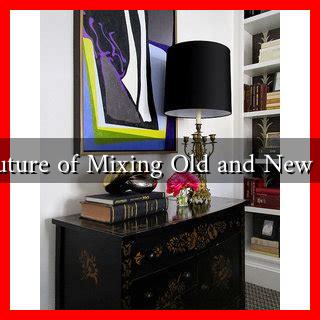-
Table of Contents
What Is the Future of Mixing Old and New Design Styles?
In the ever-evolving world of design, the blending of old and new styles has become a prominent trend. This fusion not only reflects a rich tapestry of cultural history but also caters to modern sensibilities. As we look to the future, the question arises: what does the future hold for mixing these design styles? This article explores the significance, benefits, and potential challenges of this design approach, along with examples and insights from industry experts.
The Significance of Mixing Design Styles
Mixing old and new design styles is more than just an aesthetic choice; it represents a dialogue between the past and the present. This approach allows designers to:
- Preserve Cultural Heritage: By incorporating traditional elements, designers can honor historical contexts and cultural narratives.
- Enhance Creativity: The juxtaposition of different styles can lead to innovative solutions and unique aesthetics.
- Appeal to Diverse Audiences: A blend of styles can attract a wider demographic, appealing to both nostalgia and modernity.
Current Trends in Design Fusion
As we move further into the 21st century, several trends are emerging in the realm of mixed design styles:
- Modern Minimalism Meets Vintage Charm: Many contemporary spaces are incorporating vintage furniture and decor into minimalist designs, creating a warm yet uncluttered atmosphere.
- Industrial Meets Rustic: The industrial style, characterized by raw materials and open spaces, is often softened with rustic elements like reclaimed wood and vintage textiles.
- Art Deco Revival: The resurgence of Art Deco elements in modern design showcases how geometric patterns and luxurious materials can coexist with contemporary aesthetics.
Case Studies: Successful Blends of Old and New
Several notable projects exemplify the successful integration of old and new design styles:
- The High Line, New York City: This elevated park transformed from an old railway line incorporates modern landscaping with historical industrial elements, creating a unique urban space.
- Hotel Emma, San Antonio: This luxury hotel blends the historic architecture of a 19th-century brewery with modern amenities, offering guests a taste of the past with contemporary comfort.
- Apple Park, Cupertino: While primarily modern in design, Apple Park incorporates natural elements and sustainable practices that echo traditional architectural philosophies.
Challenges in Mixing Design Styles
While the fusion of old and new styles offers numerous benefits, it also presents challenges:
- Balancing Aesthetics: Striking the right balance between old and new can be difficult; too much of one can overshadow the other.
- Cost Implications: Sourcing vintage materials or furniture can be expensive, and integrating them into modern designs may require additional investment.
- Maintaining Functionality: Ensuring that older elements meet modern standards of functionality and safety can be a complex task.
The Role of Technology in Design Fusion
Advancements in technology are playing a crucial role in the future of mixed design styles. Tools such as 3D modeling software and virtual reality allow designers to experiment with various combinations of styles before implementation. Additionally, online platforms enable designers to source vintage materials and connect with artisans who specialize in traditional craftsmanship.
According to a report by Statista, the global interior design market is projected to reach $255 billion by 2025, indicating a growing interest in diverse design approaches.
Conclusion: Embracing the Future of Design
The future of mixing old and new design styles is bright and full of potential. As designers continue to explore this fusion, they will not only create visually stunning spaces but also foster a deeper appreciation for cultural heritage. By embracing both the past and the present, we can look forward to a future where design is not just about aesthetics but also about storytelling and connection.
In summary, the blending of old and new design styles offers a unique opportunity to celebrate history while innovating for the future. As we navigate this exciting landscape, the key will be to maintain a balance that honors both traditions and modernity, ensuring that design remains a dynamic and inclusive field.

